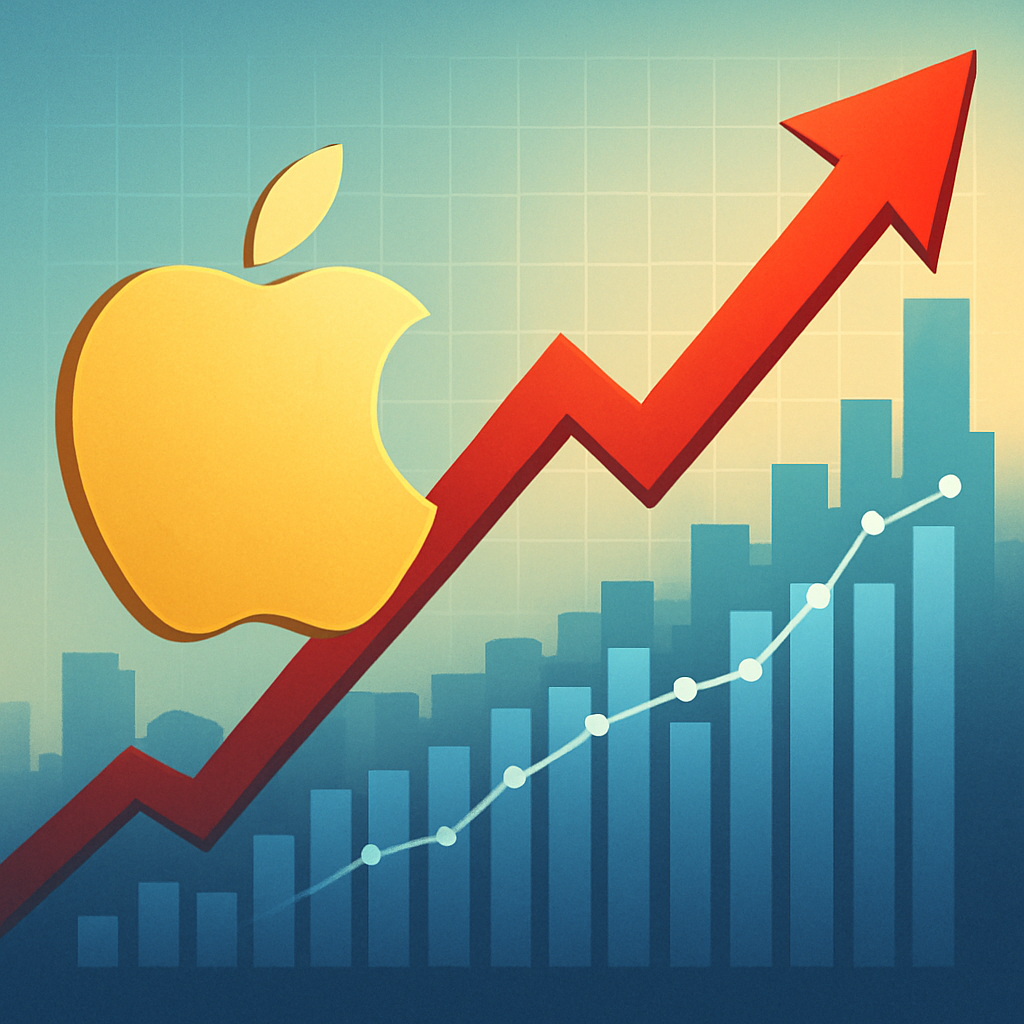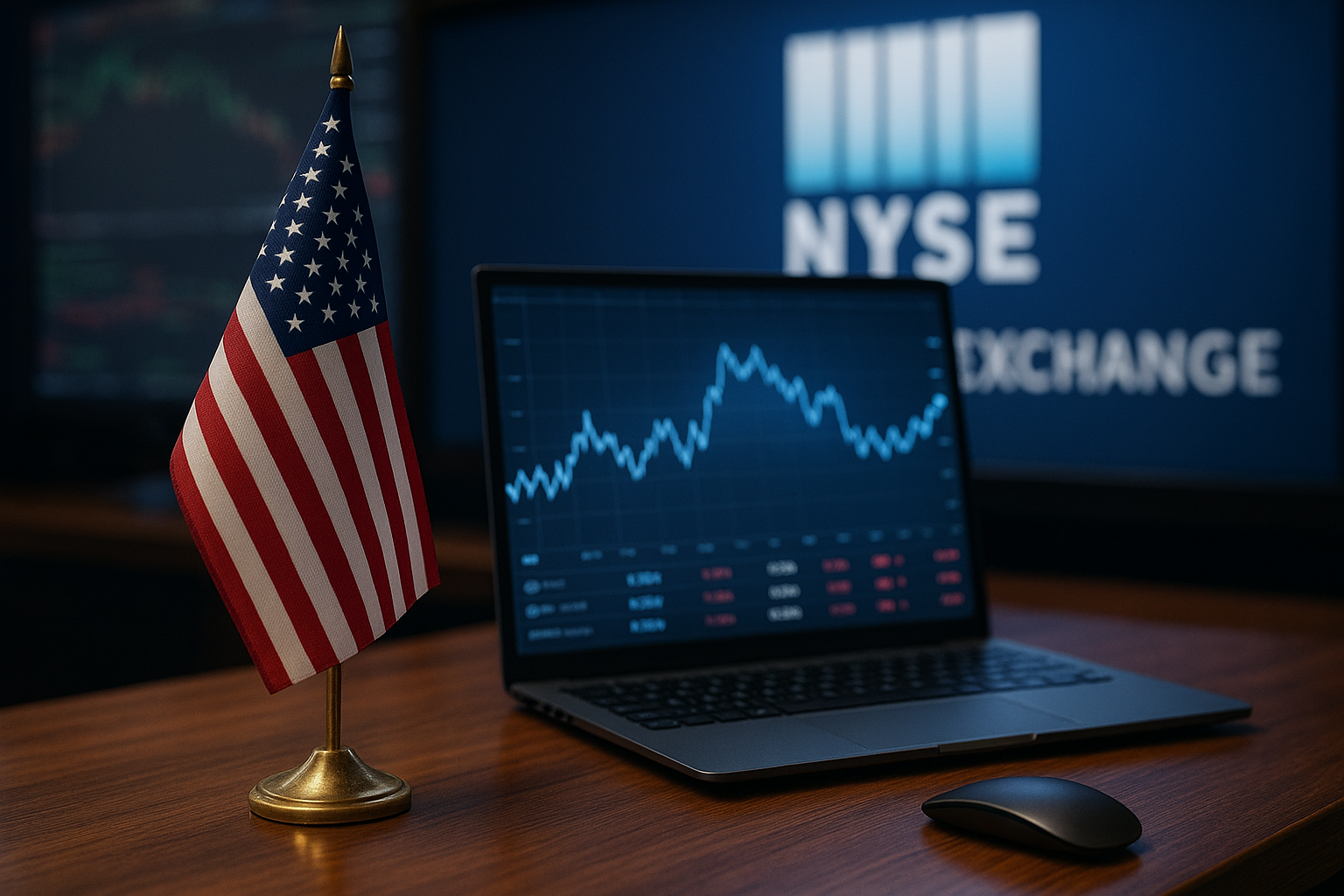Wall Street found its footing on Wednesday as both the Dow Jones Industrial Average and the Nasdaq Composite closed higher, boosted by a powerful rally in Apple Inc. (AAPL), which surged more than 5% following positive analyst sentiment and signs of renewed iPhone demand. Meanwhile, Advanced Micro Devices (AMD) saw shares retreat over 6% after its Q2 earnings failed to meet elevated investor expectations, casting a spotlight on how tech sector leadership remains both a driver and a risk for broader equity markets.
As mega-cap tech stocks continue to influence overall market tone, investors are weighing concentration risk, sector rotation, and the need for rebalancing amid volatile earnings reactions.
Apple Lifts the Tide, But Cracks Emerge Beneath
Apple’s sharp rebound came after multiple analysts raised their price targets and reiterated bullish outlooks. JPMorgan cited “encouraging signs of iPhone demand stabilization in Asia and U.S. markets,” while Wedbush called Apple a “sleeper AI winner,” projecting upside from on-device AI integration in the iPhone 16 lineup due later this year.
The rally added over $150 billion to Apple’s market capitalization in a single session, reaffirming its role as a bellwether for investor sentiment. Apple’s move contributed significantly to the Nasdaq’s 1.2% gain and helped the S&P 500 close up 0.7%. The Dow Jones Industrial Average rose 0.5%, despite pressure from industrials and energy.
By contrast, AMD’s Q2 report — while solid on revenue at $5.8 billion, up 10% YoY — included guidance that underwhelmed investors hoping for an AI-driven breakout similar to Nvidia’s. The market punished AMD, exposing the fine line between high expectations and sustainable momentum in the AI arms race.
Why This Matters for Investors
Tech continues to be both a hero and a hazard. The Nasdaq has gained over 36% year-to-date, driven by a handful of names: Apple, Nvidia, Microsoft, Amazon, and Meta. This narrow breadth raises concerns about overconcentration. According to Bank of America, the top 10 stocks in the S&P 500 now account for nearly 34% of its market cap — a historic high not seen since the dot-com bubble.
Such concentration means a single earnings disappointment — like AMD’s — can shake confidence. However, it also creates opportunities for investors to assess where alpha might emerge beyond mega-cap tech.
“The market continues to reward certainty and punish even slight misses,” said Liz Ann Sonders, Chief Investment Strategist at Charles Schwab. “This environment demands active rotation, not passive momentum chasing.”
Meanwhile, sector rotation into industrials, financials, and energy has slowed in recent sessions, reinforcing the need for balance between growth exposure and cyclical plays.
Future Trends to Watch
1. AI Adoption & Device Cycles
Apple’s AI integration narrative is still in early innings. If its next iPhone cycle includes on-device AI and privacy-focused machine learning, it could reset expectations for mobile tech, benefiting not just Apple, but suppliers and software partners.
2. Chip Sector Divergence
AMD’s stumble contrasts sharply with Nvidia’s recent surge. Investors should closely monitor upcoming earnings from Super Micro Computer, Intel, and Arm Holdings for broader AI infrastructure trends. A divergence between GPU-focused firms and CPU-heavy competitors may persist.
3. Consumer Resilience
With inflation cooling and the Fed likely holding rates steady, consumer spending patterns — especially in tech — could become more favorable. Apple’s recent performance in China and India indicates shifting demand dynamics that investors may want to track.
Key Investment Insight
Rebalance to Ride Winners, Hedge Volatility
Investors should consider adjusting tech exposure toward outperformers like Apple while hedging volatility through diversification across adjacent sectors. Semiconductor exposure should be split across AI leaders (Nvidia) and diversified infrastructure plays (like Super Micro or Broadcom). ETF investors may look into equal-weighted tech indexes or thematic funds focused on AI infrastructure.
With market breadth still narrow and volatility likely into Q3 earnings season, building resilient, balanced portfolios remains critical.
Stay tuned to MoneyNews.Today for daily insights and market-moving developments — from big tech shakeups to macroeconomic signals — helping investors cut through noise and stay ahead of trends.





